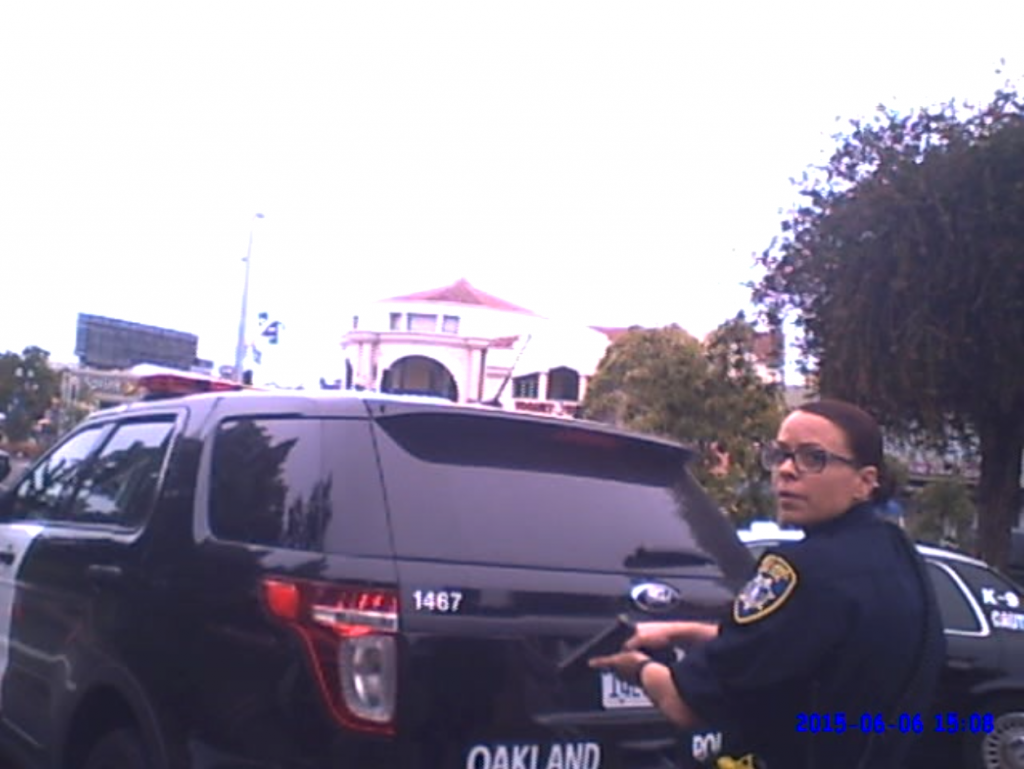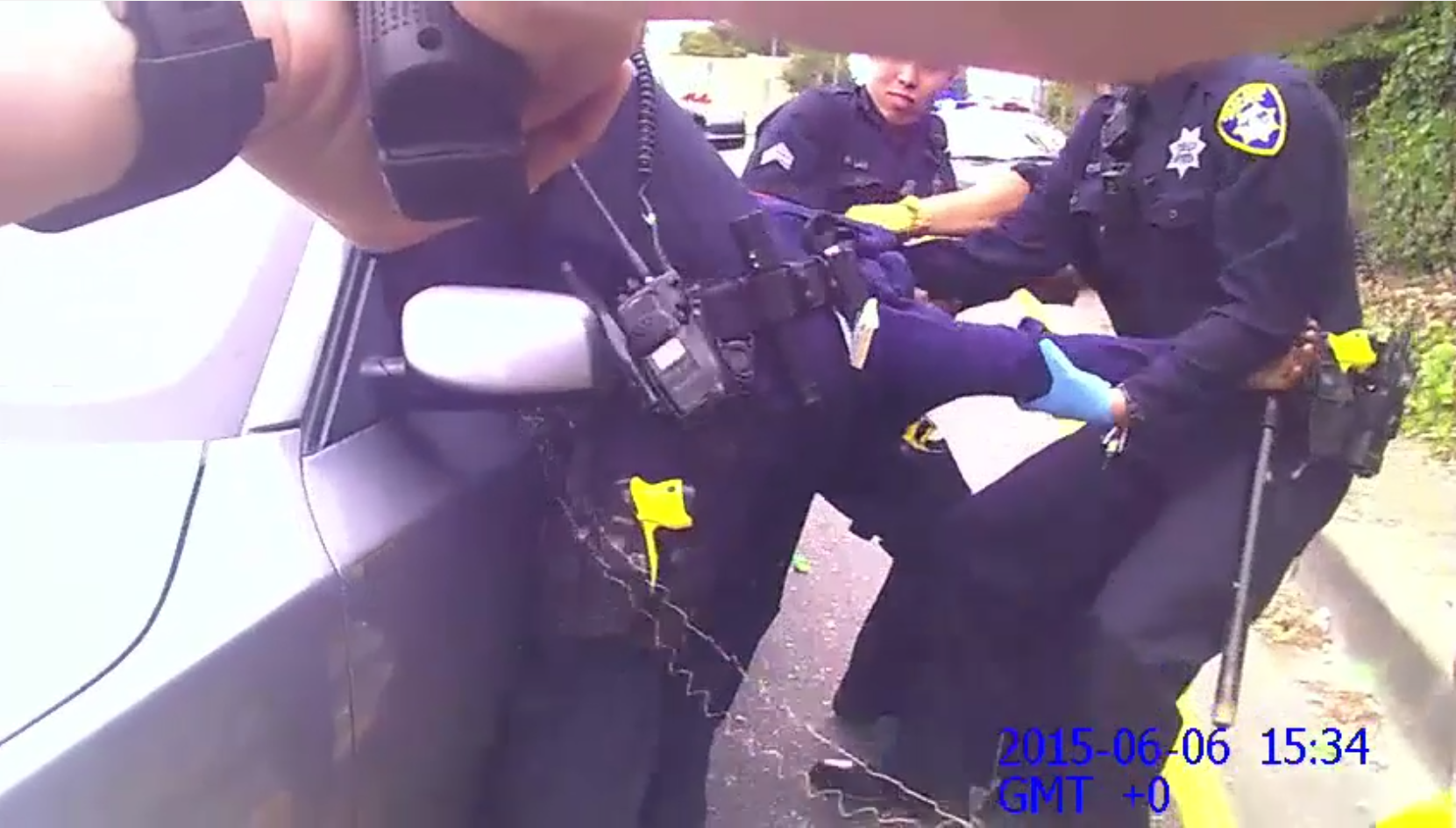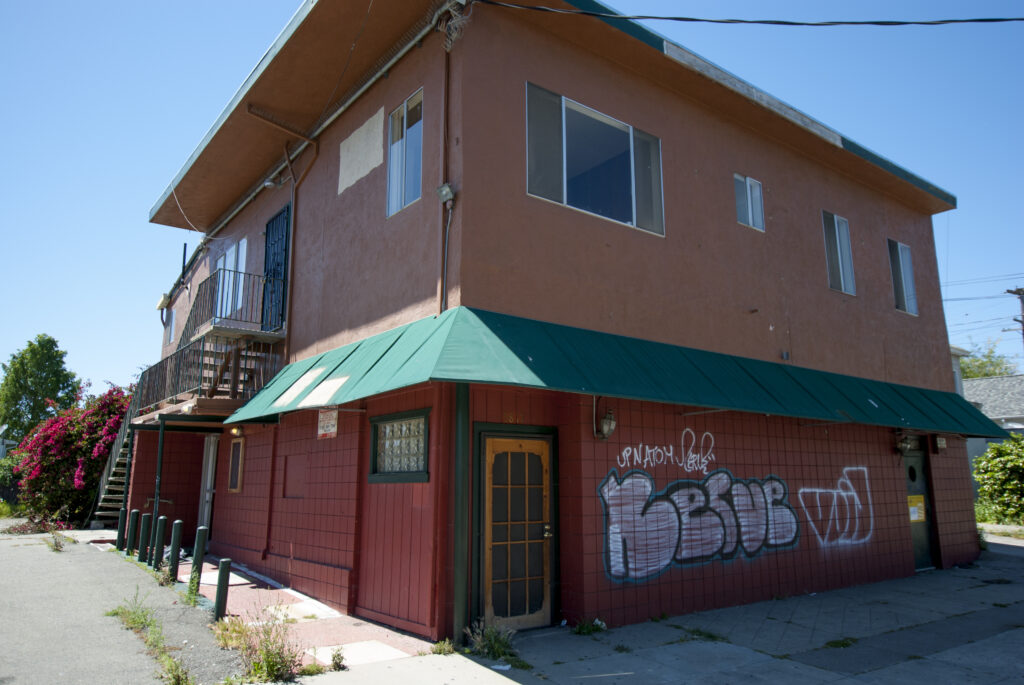Nearly four years since Oakland police shot and killed a man found unconscious in his car near Lake Merritt, the department released video from two other officers who witnessed the shooting.
But the videos still don’t provide a clear view of what happened before Officer Nicole Rhodes shot and killed Demouria Hogg, in one case because the battery on the officer’s camera died prior to the shooting.
Hogg, 30, was found by Oakland firefighters in a gray BMW on an off-ramp from I-580 near Lakeshore Avenue at about 7:30 a.m. on June 6, 2015. He was unconscious and a gun was on the passenger seat. Oakland police officers tried to wake him for over an hour by making announcements over a loudspeaker, blaring sirens and firing beanbags at his car, but he didn’t wake up.
Finally, the officers came up with a plan to break Hogg’s window and pull him out. Officer Karl Templeman used a crowbar to smash the window while Officer Daniel Cornejo-Valdivia stood by with a Taser and Rhodes by the front windshield with her gun. As soon as Templeman broke the window, Cornejo-Valdivia fired his Taser. Rhodes told investigators she saw Hogg make a movement in the direction of the gun and shot him through the windshield.

The department put out few details about the shooting for months and even Rhodes’ name was withheld until the conclusion of the district attorney’s investigation. I pushed the department to finally release Rhodes’ body camera footage last September, more than three years after the shooting, but the footage doesn’t have a clear view as the camera is pointed slightly down.
Following that, I requested the video from the other two officers who were immediately next to the driver’s side window, Cornejo-Valdivia and Templeman. The department finally released both videos on Wednesday. Templeman’s also does not have a clear view of Hogg when he was shot, as he was behind the driver’s side door at the time.
Cornejo-Valdivia, who was directly facing the driver’s side window and deployed a Taser once the window was smashed, likely would have had the clearest view of the shooting. But his video cuts off minutes before the shooting. In a statement, an Oakland police official said the battery in his body-worn camera died prior to the shooting. Cornejo-Valdiva can be heard on the footage saying that his PDRD (Portable Digital Recording Device) is “red,” indicating it had a low battery.
Other recent police killings of sleeping suspects have stirred outrage, such as the killing of rapper Willie McCoy, who was found unconscious in his car in a Taco Bell drive-through with a gun in his lap and was killed by six Vallejo police officers. Last year, Oakland police killed Joshua Pawlik, a homeless man found unconscious in a yard of a North Oakland home. Oakland’s court-appointed monitor disagreed with the extent of police Chief Anne Kirkpatrick’s discipline in that case, calling her assessment “disappointing and myopic.” U.S. District Court Judge William Orrick appointed an independent investigator to reevaluate the shooting.
Oakland police have not yet released personnel files related to the shooting of Demouria Hogg, required under state law as of this year, so it is unclear if Rhodes was disciplined, though she remains an Oakland police officer. A district attorney’s investigation cleared her of any criminal charges.
The city of Oakland paid $1.2 million in a civil settlement with Hogg’s family in 2016.

![[Tribune Tower building]](https://www.oaklandreporter.org/wp-content/uploads/2017/06/tribune-tower-13th-street-1024x685.jpg)

